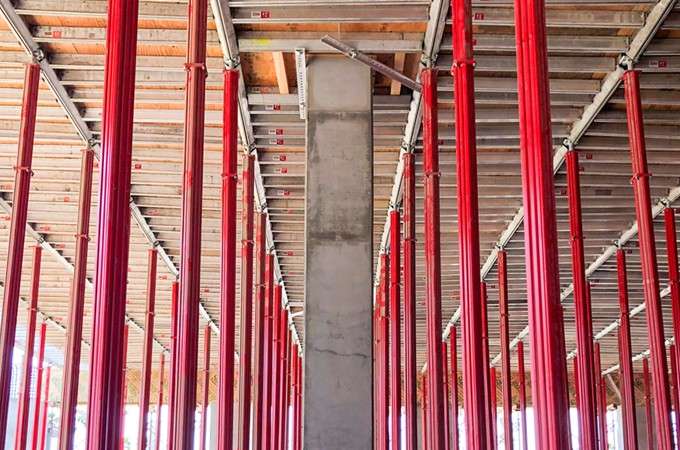The formwork sector is being influenced by the requirements of improved workplace safety and crane-independent systems that are fast and reliable. Working at heights has become less hazardous. Due to these reasons, concrete formwork is becoming popular.

A formwork system signifies the molds used to store and hold wet concrete until curing is achieved. Curing is a significant process in concrete construction. Concrete has been demonstrated to be the most suitable construction material for buildings and foundations since it withstands fire and ensures protection against storms and extreme temperatures.
In addition, concrete contributes to the creative modern architectural design. Therefore, modernization of formwork systems was essential to keep pace with concrete advancement. As tall structures have gradually emerged to be the modern trend, formwork systems have also developed from being simple timber-based to pre-engineered structures of steel, aluminum, timber, plywood, and plastics. The formwork technology has translated into rapid construction with less labor.
Characteristics Of Self-climbing Formwork

Self-climbing formwork was conceived due to the huge construction projects that were required to be completed in tight schedules. Workplace safety is an important requirement that has also contributed in the development of self-climbing formwork techniques. These techniques have reduced the requirement of cranes.
Workers now function in an enclosed safe environment, and there is adequate space for the tools and equipment. A self climbing formwork presents an operational platform on which the concrete forms are placed, and the complete assembly is raised by hydraulic cylinders. Each construction project has dissimilar characteristics, due to which the assemblies normally are customized to ensure their effectiveness and safety. Enhanced workplace safety, reduced construction period, and better efficiency are available when self-climbing formwork techniques are used.
Suitability Of Self Climbing Formwork
This technique is appropriate for locations where availability of unskilled labor is restricted. In such systems, heavy machinery and high technology is not significantly involved. The method is technologically valid for nearly all kinds of buildings. Formwork is utilized as a mold where wet concrete is transferred temporarily. The temporary system functions as a provisional support for the structure.
This method is useful for the elimination and reduction of the conventional site based skills like timber formwork, masonry, and plastering. Carefully planned formwork can increase the production, speed, and precision of the construction. Usually, in main housing schemes the cost of formwork is approximately up to 10 per cent of the general project price, and the time involved is up to 60 per cent. However, engineered formwork is still gaining popularity.


